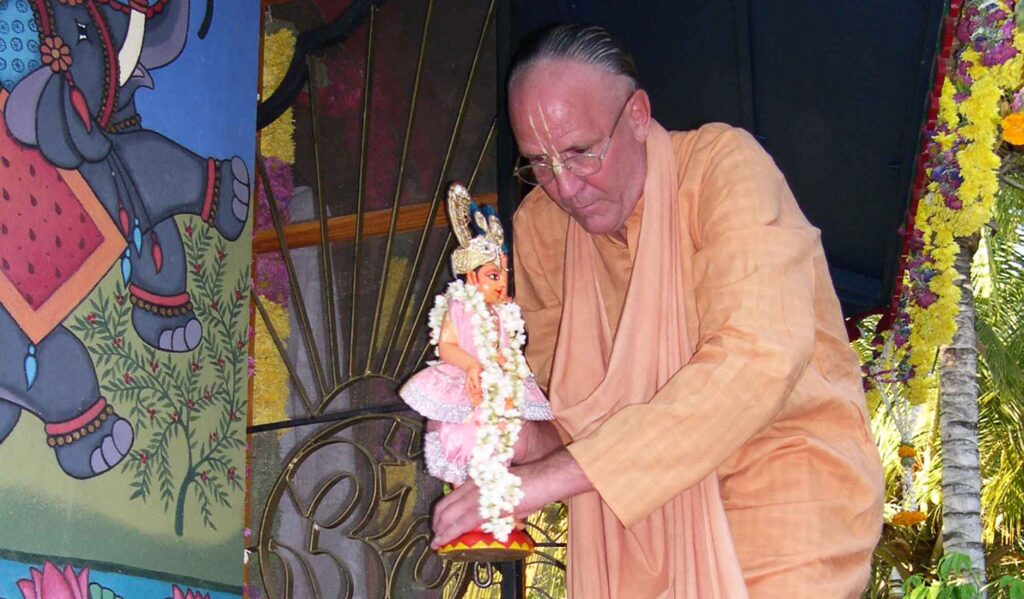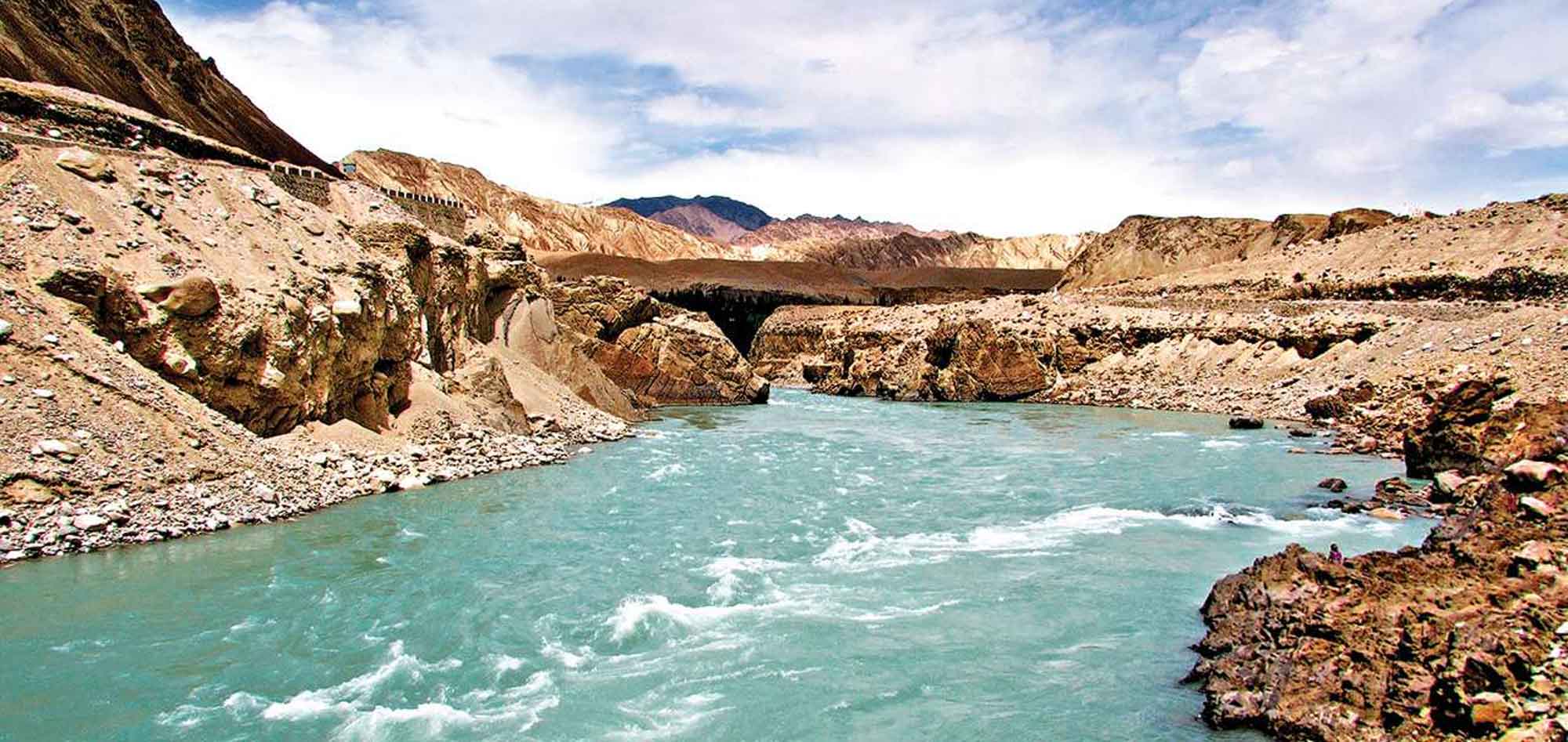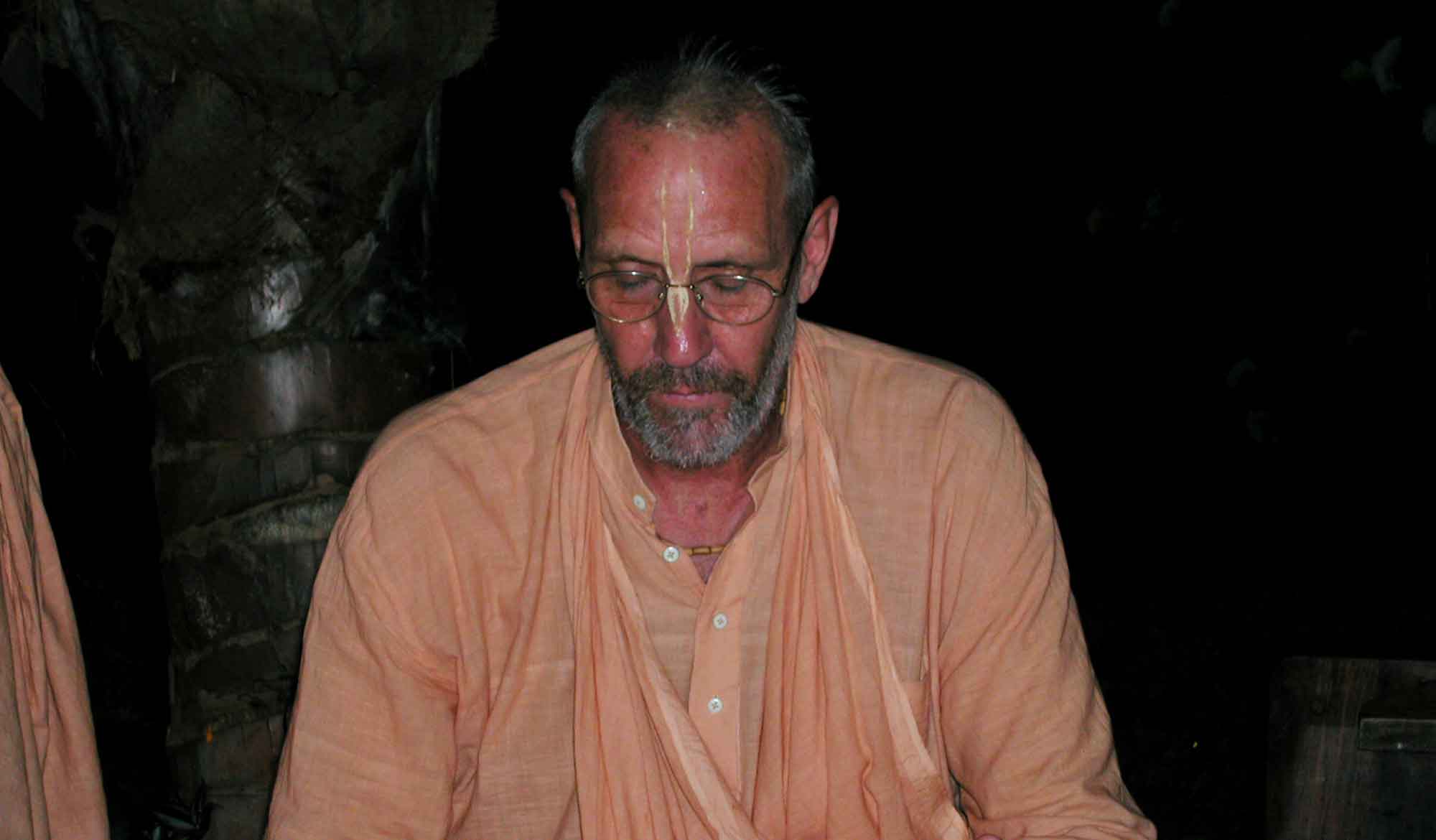by Swami B.G. Narasingha
In ‘Fulfilment’ written by Śrīla Narasiṅgha Mahārāja in 1998, the question is posed, “If Kṛṣṇa only finds complete fulfillment in the company of Rādhārāṇī, how can the jīva please Him?” What is the purpose of the jīva's existence?
Question: Why do we exist? Is it for the purpose of giving pleasure to Kṛṣṇa?
Answer: Yes. It is said that the Supreme Lord desired to increase His own pleasure and thus He manifests the multitude of living entities in eternity. These living entities are all His eternal servants.
jīvera svarūpa haya kṛṣṇera nitya dāsa
“The eternal form of the living entity is that of an eternal servant of Kṛṣṇa.”
There is however still another consideration about the svarūpa of the jīva. It is a confidential truth that Śrīmatī Rādhārāṇī alone is able to satisfy the transcendental desires of Lord Kṛṣṇa and nobody knows this truth better than the Lord Himself. Therefore, the question arises. “Why should Kṛṣṇa bother to manifest so many jīvas for His pleasure, when the Lord actually feels no satisfaction at all outside the services rendered by Śrīmatī Rādhārāṇī?”
The supreme position of Śrīmatī Rādhārāṇī has been revealed by Kṛṣṇa Himself during the rāsa–līlā. When Śrīmatī Rādhārāṇī gave up the rasa dance Lord Kṛṣṇa could find no pleasure in the rāsa-līlā even though thousands and millions of other gopīs were present. Kṛṣṇa then gave up the company of the other gopīs and went to search for Śrīmatī Rādhārāṇī.
Kṛṣṇa wants to enjoy Himself in the rāsa-līlā but without Rādhārāṇī He finds no enjoyment. Actually the whole set-up of rāsa-līlā is to show the greatness of Śrīmatī Rādhārāṇī. Śrī Rādhikā is the sole source of pleasure for the Supreme Lord.
For the living entity to desire or even think of having a direct service relationship with Kṛṣṇa is a kind of false-vanity arising from a lack of understanding the position of Śrīmatī Rādhārāṇī. Are we to think that we have the quality or quantity of service to compete with Śrīmatī Rādhārāṇī? Should we desire to be with Kṛṣṇa rather than desire to see the Divine Couple united? Certainly not!
Considering this point, we shall have to re-analyse our constitutional position. Are we the eternal servants of Kṛṣṇa or are we something else?
The truth about the living entity is this: We are always in the subordinate position. We exist not for the pleasure of serving Kṛṣṇa directly but we are to render service to Kṛṣṇa’s dear most servant. There are many dear most servants of Kṛṣṇa but who is the topmost of the dear most? That is Śrīmatī Rādhārāṇī. Therefore, we are Her servants.
Actually the living entity or marginal potency belongs to the internal energy of Kṛṣṇa. As such it can be said that the living entities are eternal servants of Kṛṣṇa under the guardianship of Śrīmatī Rādhārāṇī as detached particles of Her essence. This is realized by the jīva in a pure state of consciousness freed from all material bondage.
Kṛṣṇa desires to serve His topmost devotee but rarely gets the chance. Kṛṣṇa’s devotees are always serving Kṛṣṇa but they never accept service from the Lord. Thus there is a burning desire, an unfulfilled hankering in the heart of Kṛṣṇa, He wants to serve His devotees. To fulfil His own desire Kṛṣṇa has manifest the living entities, not to serve Him directly but to render service to His dear most servants. When Kṛṣṇa sees that His devotees are being served His desire is fulfilled. He feels great satisfaction and pleasure seeing the service rendered to His devotees.
It is sometimes seen that Śrīmatī Rādhārāṇī arranges for one of Her gopī associates to meet with Kṛṣṇa privately. That also is a sort of mystery. The gopī associates of Śrīmatī Rādhārāṇī actually have no desire to meet with Kṛṣṇa privately but because Śrīmatī Rādhārāṇī sometimes desires for Her intimate friends to be with Kṛṣṇa they will accept that service. The point being that none of the gopī friends of Rādhārāṇī desire to be with Kṛṣṇa independently.
The gopī friends of Śrīmatī Rādhārāṇī are in the highest possible ranks of service. There service is categorically higher than any other group of servitors. Similarly, in all groups and camps of servitors in the spiritual world i.e., śānta–prema, dāsya–prema, sakhya–prema, and vātsalya–prema, the position of the jīva is to render service to the heads of that particular group or camp such as Nanda and Yaśodā, Subala-sakha, Raktaka pārṣada, and others. It is never the position of the jīva to serve directly.
Lord Kṛṣṇa resides eternally in His Supreme Abode, Goloka Vṛndāvana, surrounded by hundreds of thousands of gopīs, or lakṣmīs, goddesses of fortune. This fact is mentioned in the Brahma Saṁhitā: (5.29)
cintāmaṇi-prakara-sadmasu kalpa-vṛkṣa-
lakṣāvṛteṣu surabhir abhipālayantam
lakṣmī-sahasra-śata-sambhrama-sevyamānaḿ
govindam ādi-puruṣaḿ tam ahaḿ bhajāmi
“Surrounded by millions of wish-fulfilling trees, in abodes made of multitudes of wish-yielding gems, He who tends the ever-yielding cows, and who is perpetually served with great affection by hundreds of thousands of lakṣmīs, the primeval Lord Govinda, do I worship.”
The first consort of Kṛṣṇa is Śrīmatī Rādhārāṇī, then Her expansions as the eight principle gopīs; Lalitā, Viśākhā, Citrā, Campakamallikā, Tuṅgavidyā, Indulekhā, Raṅgadevī, and Sudevī. After the eight principle gopīs, there are unlimited expansions of the serving mood of Śrīmatī Rādhārāṇī. Then there is Baladeva who heads up all the other rasas. Nanda Mahārāja and Mother Yaśodā, Subala and Śrīdama, Raktaka and Patraka etc., these are all nitya-parikara, the eternal associates of the Lord. (For further illumination of the eternal associates of Rādhā and Kṛṣṇa, one may refer to Śrī Śrī Rādhā-Kṛṣṇa-gaṇoddesa-dīpikā, A Lamp to See the Associates of Śrī Śrī Rādhā-Kṛṣṇa, by Śrīla Rūpa Gosvāmī.) These nitya–parikara are not members of the marginal potency, taṭasthā–jīva. Except for the nitya–parikara devotees, no one renders direct service to Kṛṣṇa at any time.
Lastly, I do not think that there can be a superior reason for our existence than this. Kṛṣṇa wants to serve the lotus feet of Śrīmatī Rādhārāṇī but He rarely gets the chance. Therefore, for a jīva soul to become the servant of Śrīmatī Rādhārāṇī; to become Her menial slave, to care and see to Her every need and whim, gives many thousands of times more pleasure to Kṛṣṇa than a jīva’s direct service to Him. In this position the jīva achieves the fulfilment of his existence.
We find also that the service of Śrīmatī Rādhārāṇī is very high and that also is not directly the eternal position of the jīva. Śrī Caitanya Mahaprabhu has said,
gopī bhartuḥ pada-kamalayor dāsa-dāsānudāsaḥ
“I am the servant, of the servant, of the servant, of the lotus feet of those simple cowherd girls of Vṛndāvana.”
Thinking in the line of Śrī Caitanya Mahaprabhu we shall always aspire to be the servant, of the servant, of the servant, of a Vaiṣṇava. It is not our actual position to directly serve either Kṛṣṇa or Śrīmatī Rādhārāṇī. We are first and last the servant of our guru. That is the sweetest and most elevated position for the jīva.
Here in this world we serve our guru as he appears in the guru-paramparā and in the transcendental world of eternal līlā we serve our Gurudeva as he appears as one of the eternal associates of the Divine Couple, Śrī Śrī Rādhā and Govinda. That is our constitutional position.
More Articles by Swami B.G. Narasingha
The Sacred River Sindhu/Indus
‘The Sacred River Sindhu/Indus’ was posted by Swami B.G. Narasingha on his blog, narasingha.net, on October 2nd, 2011. In this short article, Narasingha Maharaja explains the significance of the River Sindhu and his pilgrimage to it. This article was later expanded into a bigger article called ‘Sindhu River – How India Got Her Name.’
Instructing the Guru
This article “Instructing the Guru” was written in April 2018 by Śrīla Narasingha Mahārāja who answers a question concerning a previous article wherein a Vaiṣṇavī writes a letter to her dīkṣā-guru and explains to him about the importance of śikṣā. In response, a question was raised by a devotee about the etiquette of a disciple instructing her guru.
The Atomic Ray – From Uniform Consciousness to Individual Conscious Units
In “The Atomic Ray - From Uniform Consciousness to Individual Conscious Units” written in 1996 Śrīla Narasiṅgha Mahārāja discusses the constitutional position of the jīva, according to Bhaktivinoda Ṭhākura and Śrī Caitanya-caritāmṛta.













